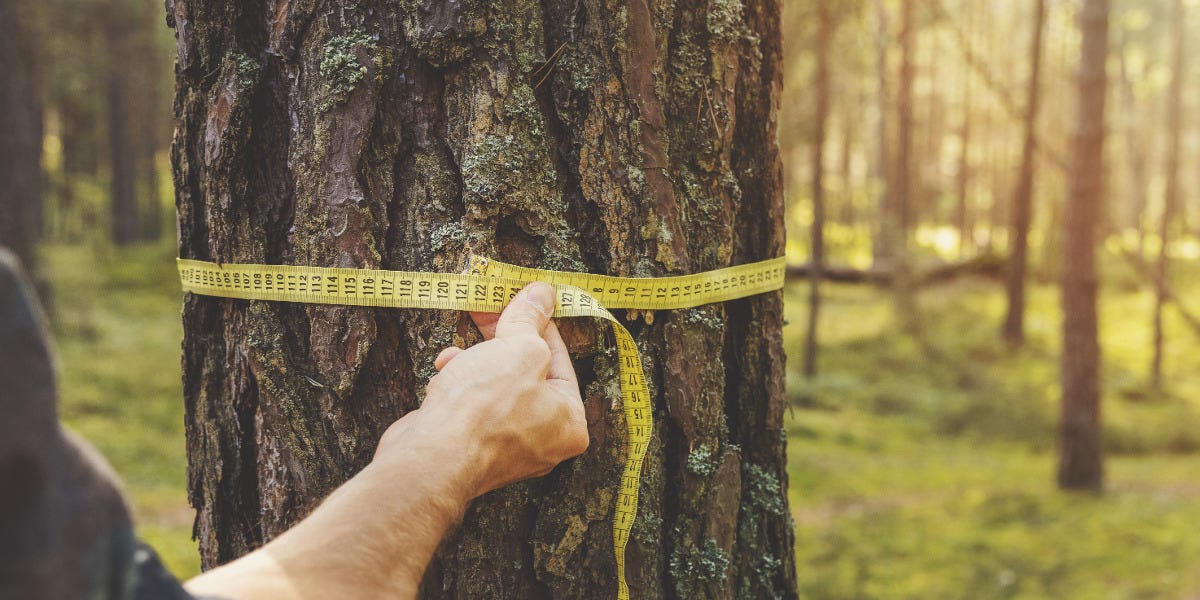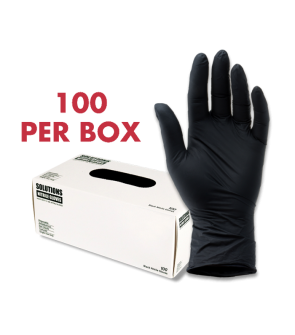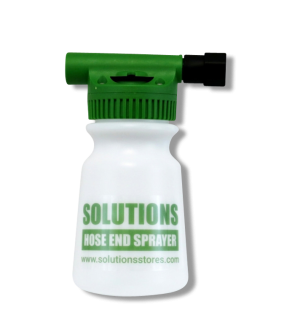Gain access to personalized product screening, the best pricing, rewards, and more!
Most Effective Products
How to Measure A Tree
This page is a general DIY guide on calculating a tree's size and square footage. Using the methods or tips suggested, you can accurately measure and determine how much product material to use for your tree.
Of the many ways to measure trees, it's easy to become overwhelmed and lost during pest control management. However, it is important to know the size of your tree for specific treatment plants you intend on taking.
Since trees are living organisms that produce oxygen, improve air quality, support wildlife, and help prevent flooding, it is essential to know how much product material to use. By knowing the size of the tree, you can better enhance your pesticide's success without causing potential damage to the tree from overapplication or misuse.
Determining how much herbicide, insecticide, fungicide, fertilizer, or other pesticide product to use is a precise science, but it can be done with our DIY guide. Here, you can find commonly used techniques used when measuring trees.
Tools Needed
Depending on what part of the tree you intend to measure, the type of tools you will need will vary. Here are the tools commonly used:
Measuring Tree Height
- Clinometer - Measures the angle to the top of the tree to calculate height using trigonometry.
- Laser Rangefinder - Measures distance and angle electronically for more accurate height calculations.
- Hypsometer - Specialized forestry tool that estimates tree height.
- Measuring Tape - Used for measuring the distance from the base of the tree.
Measuring Tree Diameter (DBH - Diameter at Breast Height)
- Diameter Tape - A flexible tape measure that directly converts tree circumference to diameter.
- Calipers - Large forestry calipers provide direct diameter measurements.
- Regular Measuring Tape - This can be used to measure circumference.
Measuring Canopy Spread (Crown Diameter)
- Measuring Tape - Used to measure the distance from one side of the canopy to the other.
- Rangefinder - Provides precise measurements over longer distances.
Measuring Tree Basal Area (Cross-Sectional Area at DBH)
- Basal Area Prism - A specialized forestry tool for estimating basal area per acre.
- D-Tape or Calipers - Used to measure diameter for basal area calculations.
Measuring Root Zone (Critical Root Zone)
- DBH Tape - Determines tree diameter, which helps estimate the root zone.
- Measuring Wheel - Useful for measuring larger root spread distances.
How to Measure A Tree Height
There are three common approaches for this type of method.
Using a Clinometer
Step 1: Stand at the Base of the Tree
Measure a set distance away from the tree on level ground. If you are using a clinometer, you do not need another person's assistance.
Simply point the red dot from the clinometer away from you and towards the object you are measuring. Walk away from the tree from a distance of 50 feet.
Point the clinometer at the top of the tree once you are 50 feet away, and then tilt it down to the base.
Step 2: Record Findings
Enter the numbers from the right-hand scale that correspond with your line of sight at the bottom of the tree.
Add these numbers together then divide by 2 to determine the trees height.
Example: the top measurement is 200, and the bottom measurement is 16 (ignore the negative sign).
200 + 16 = 216 feet
Divide 216 by 2.
The tree is 108 feet tall.
Using a Stick
Step 1: Gather A Straight Stick
Find a straight stick about the length of your arm.
Hold the stick upright at arm's length, making a 90-degree angle with your hand.
Adjust your distance from the tree so that the stick appears the same height as the tree when you align the bottom of the stick with the tree's base.
Step 2: Measure the Distance
Measure the distance from your feet to the base of the tree using the measuring tape - this is an estimate of the tree's height.
Using A Shadow Method
Step 1: Determine the Time of Day
Pick a day or certain time when plenty of sun will cast a clear shadow.
Step 2: Measure The Shadow
Find the farthest point where the tree's shadow ends.
Place the measuring tape at the base of the tree and extend it to the tip of the shadow.
If the shadow is too long for your measuring tape, use a stick or a rock to mark it in sections.
Then, measure your own height.
Multiply the length of the tree's shadow by your own height to find out the tree's height.
Divide the answer you get from measurements by the length of your shadow.
How to Measure A Tree Diameter (DBH)
Step 1: Find the Correct Measurement Height
Measure at 4.5 feet above the ground on the tree trunk.
If the tree is on a slope, measure from the uphill side of the tree.
If the tree has multiple trunks, measure the largest trunk separately.
Step 2: Measure the Tree's Circumference
Wrap the measuring tape around the tree at 4.5 feet.
Ensure the measuring tape is level and snug around the trunk (not twisted or slanted).
If using a regular measuring tape, measure the circumference and convert it to the diameter.
Follow the formula: DBH = circumference divided by 3.1416 to get the diameter of the tree.
Example:
If your tree circumference is 31.4 inches, then you would divide it by 3.1416. This means your tree's diameter is 10 inches.
For multi-stem trees: measure each tree trunk and add them together. Then divide that total by 3.1416 to find the diameter.
For irregularly shaped trunks: take multiple circumference measurements at 4.5 feet and average them.
For forked trees (below 4.5 feet): measure each main trunk separately at 4.5 feet.
How to Measure A Tree Canopy Spread (Crown Diameter)
Step 1: Measure the Widest Part of the Canopy
Stand directly under the tree. Identify the widest horizontal distance from one side of the tree's canopy to the other (this should be branch tip to branch tip in 2 directions, essentially edge to edge of the tree).
Place a marker or stake at the outer edges of the tree canopy drip line (the furthest point where water would drip from the leaves).
Measure the distance between these two points using a tape measure. This first measurement will be where the crown is the widest.
Step 2: Measure the Perpendicular Canopy Width
The second measurement is at a 90-degree angle from where you took the first measurement. Mark the ground below the furthest branch on that side.
This ensures an accurate average measurement, as tree canopies aren't always perfectly circular.
Step 3: Calculate the Average Canopy Spread
Use a measuring tape to calculate the distance between the 2 points that were marked.
Follow the formula: Width 1 + Width 2 divided by 2 = average canopy spread.
If the canopy is irregular, take multiple measurements at different angles and average them.
How to Measure A Tree Basal Area
Basal area is the cross-sectional area of a tree trunk at breast height (4.5 feet or 1.37 meters above ground).
Step 1: Measure Tree Diameter at Breast Height (DBH)
The first thing to do is to measure the diameter breast height (DBH) at 4.5 feet above ground on the tree trunk.
We recommend using a D-Tape (diameter measuring tape) for accurate results.
Wrap the D-Tape around the tree trunk to get the diameter directly.
You may also use a regular measuring tape to find the circumference, but you will need to convert it with the formula (DBH = circumference divided by 3.1416).
Step 2: Calculate the Basal Area
Once you have the diameter breast height, you are ready to calculate the basal area of the tree.
Use the formula: Basal area = 0.005454 multiplied by (DBH in inches)^2.
For multi-stemmed trees: Measure each trunk's DBH separately, calculate the basal area for each, and add them together.
How to Measure A Tree Root Zone
The critical root zone is the area around a tree where roots are most concentrated and essential for stability and nutrient absorption.
Step 1: Measure the Trees DBH (Diameter Breast Height)
Find 4.5 feet above the ground on the tree trunk and measure the tree's diameter using a D-tape or a measuring tool (convert circumference to diameter if necessary).
Step 2: Determine the Root Zone Radius
Multiply the tree diameter breast height by 1.5 to find the critical root zone of the tree.
Example:
If your tree's DBH is 30 inches, then the tree's critical root zone would be 45.
Key Takeaways
How to Calculate the Size of a Tree?
- Measuring the size of a tree depends on what aspect you want to assess - height, diameter, canopy spread, basal area.
How Do Surveyors Measure Trees?
- Typically, surveyors measure trees by recording their diameter breast height.
What is The Most Accurate Way to Measure A Tree?
- The most accurate way to measure trees is to record their height with a clinometer and a determination of their diameter breast height with a D-tape.









